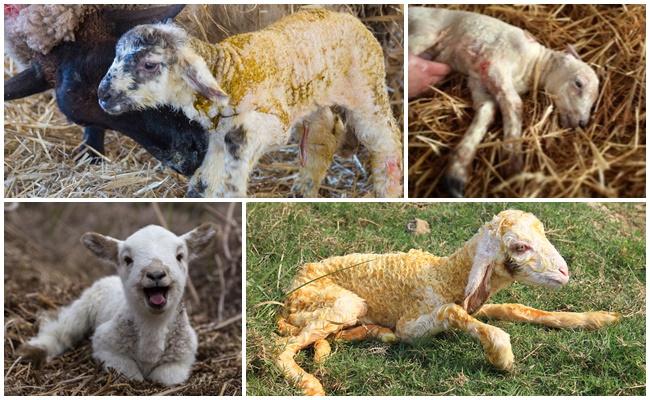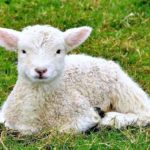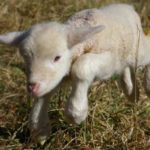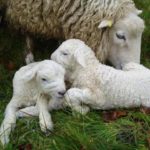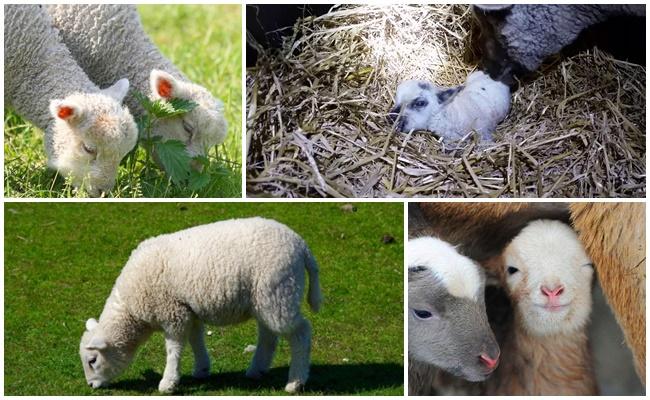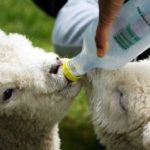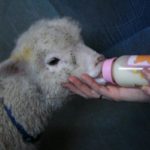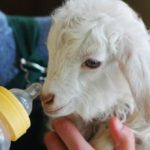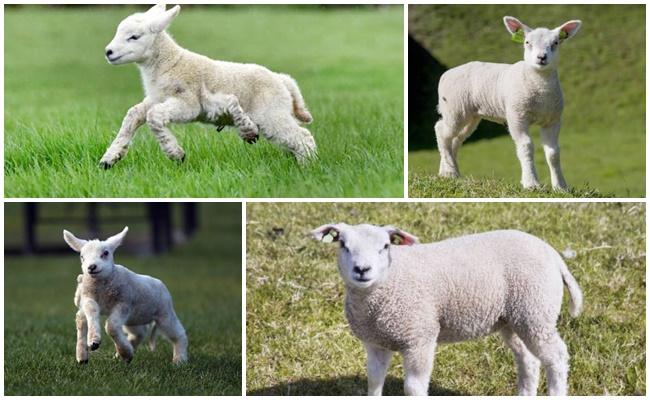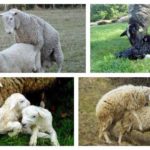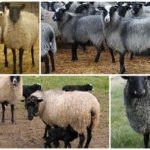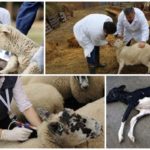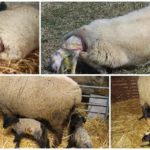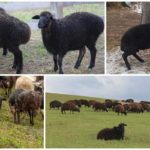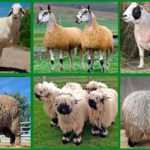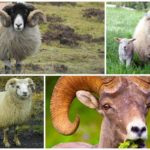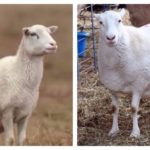Sheep are considered one of the most prolific domestic animals, as they go out in search of their soulmate almost all year round, regardless of the season. True, lambing most often occurs in winter and spring. At the same time, newborn lambs need close attention and constant care. In the first hours after birth, they need care. Therefore, the further existence of the animal depends not only on the behavior of its parents, but also on the farmer.
Appearance
Depending on the breed and genetic characteristics, there are external differences in newborn lambs. A baby ewe and ram will definitely have less wool than the adults. In addition, these babies do not have horns. The lamb's body parts are smaller in size compared to the dimensions of its mature parents.
At birth, the farmer must ensure that all the babies are dry and that the mother sheep licks each of her babies. In the future, this will allow her to distinguish her lambs from other newborns from the herd.
Average weight of newborn lambs
The average weight of one newborn is approximately 4-6 kilograms, if there is only one baby in lambing. When two lambs are born, each of them will weigh 3-5 kilograms. Soon they begin to suck their mother's milk. Ewe and ram babies gain weight quickly. Although the first couple of days they mostly spend their time passively, sleeping.
Little lambs fed on the milk of dairy sheep consume a lot of nutrients that will help in their development in the future.
During the first 2 months, babies gain 350-500 grams daily. Such conditions for a growing organism can only be provided by caring mothers and attentive farmers who monitor not only the growth of a small female or male, but also the state of health.
Rules for caring for them
A newborn lamb may be born weak. Some individuals may not even show signs of life. Therefore, the farmer should carry out several procedures to make the pet come to life:
- The muzzle is cleaned.
- Artificial respiration is performed (the paws are pressed to the newborn’s chest, air is blown into the mouth).
- The head of the lamb is supported and needs to be helped to take its first sips.
The umbilical cord usually breaks on its own.But in rare cases, the farmer still has to trim it himself. After the manipulation, treatment with iodine should follow. In order for the baby to be strong, in the first days of life he should be given artificial heating with ultraviolet lamps. This will increase the hemoglobin level and the number of deposits of phosphorus-calcium salts.
What to feed lambs
The first feeding in a lamb's life occurs 40 minutes after birth. Before this, mandatory treatment of the female must be carried out. The sheep's wool is sheared in the area where the teats and udder are located. The nursing mother is washed under warm water and the colostrum is expressed. Only after these procedures are small lambs allowed near her. They need to be shown where the udder is. Therefore, the farmer must complete this mission for the first time. He should guide the lamb to the feeding area. This is done simply by hand.
Sheep experience extreme thirst after giving birth. Therefore, farmers should water their pets. A nursing mother can drink one and a half liters of water at a time. Approximately how much she will need after the lambs are fed for the first time. The nurse will also need hay for consumption.
Instead of sheep's milk, goat's or cow's milk can be used. A one-week-old baby will need 145 grams for one of 6-7 meals. You can reduce portions with this diet only from 2 months.
Regardless of what and according to what diet the baby eats, a complete refusal of sheep’s milk is not acceptable. It properly triggers the immune system and allows the growing body to develop according to age.Colostrum can be given instead of sheep's milk. If there is no other lambing sheep on the farm, then you should turn to other farmers for help. This is important for a pet, a possible future leader of the pack.
Artificial feeding
Self-feeding lambs artificially is a very difficult task for every farmer. But you can also cope with it if you devote enough time to it and do not forget about your obligations. You just need to remember:
- caring for lambs does not allow for relaxation; a strict feeding regime must be adhered to;
- a young organism that is raised separately from a nursing lamb must stay in a clean, warm and dry place;
- You cannot independently and at will violate the lamb’s diet by increasing its portion of milk;
- you can teach a newborn to drink from a bowl, but only when he is 12 days old;
- Feeding equipment must be clean and sterilized.
If there is another lactating female in the herd, then you can try to introduce her to a hungry baby from another lambing sheep.
How to properly label
For breeding purposes, it is customary for farmers to mark animals. It can be applied to a baby as early as 3 days of age. The tag allows you to identify the animal. You can also use it to find out the owner's name. The clip is placed on the lambs ears. It is made of plastic. Although metal tags were previously popular. It is installed using a clipper, which makes this procedure painless.
There are other options for tagging lambs, but they are more painful:
- tattoo;
- burning information;
- tweezing on the ears.
Now more and more farmers are inclined not to injure their animals.One of the newfangled methods is chipping. It is likely that this option will soon replace even wearing ear clips. It is important that the information from the chip cannot be replaced, but it can be read.
Selection
If the farm has expensive breeds of animals, then for breeding it is necessary to select the best specimens. Of course, they choose among the young animals.
To the tribe
Young individuals undergo the first inspection 10-15 days after birth. Those lambs that are in good health, strong in build and heavy in weight are taken for breeding. After the last feeding with mother's milk, another selection is carried out. They are then re-examined at 1 and 2 years of age.
For meat
Cull lambs are selected for meat. As a rule, rams are slaughtered when they reach 8-9 months. It is believed that at this age lamb is the juiciest.
Vaccinations and disease prevention
The need to monitor the health of an animal is always present. To do this, the farmer must know what procedures should be carried out with a newborn lamb in the first and subsequent days of its life. Disease prevention occupies a fundamental place in this issue. Therefore, it is impossible to do without vaccination. The first is carried out 3-4 days after lambing. At the request of the pet owner, a rabies vaccination can be performed. Additional security measures never hurt anyone.

